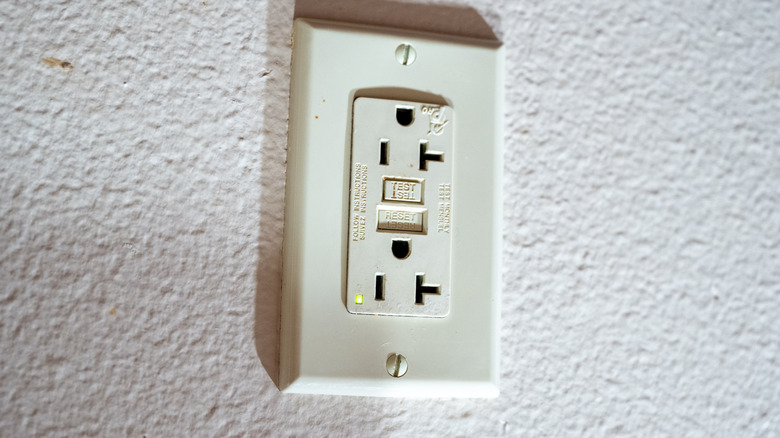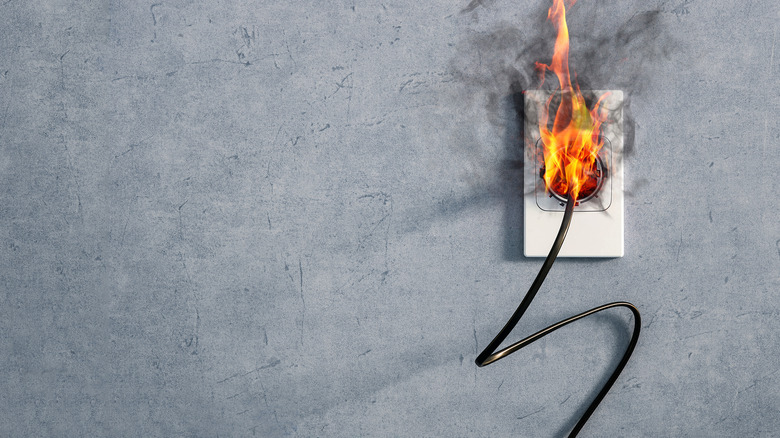The Actual Reason Your Wall Outlet Is Upside-Down
If you've ever looked closely at your wall outlets, you might have noticed something curious: Some of them are installed upside-down, with the grounding prong (the third hole) at the top instead of the bottom. At first glance, it might seem like a DIY electrical mistake or a quirky design choice, but there's actually a practical reason behind this. And this is something you might want to know before upgrading your electrical outlets.
First things first, though, you might be surprised to learn that there is not a universally "right" or "wrong" way to install an electrical outlet. The National Electrical Code does not specify which orientation is required for outlets. That said, the most common orientation is the one you're probably used to seeing — the two vertical slots at the top and the third, rounded grounding prong at the bottom. This setup is considered standard and familiar, making it the default choice for many electricians and homeowners.
Now, let's address the practical exception to this norm. It's fairly common to install outlets upside down — that is, grounding prong at the top — when the outlet is controlled by a wall switch. This subtle change serves as a visual cue for future electricians to take note of, as it allows professionals (and residents) to quickly identify which outlets are switch-controlled. This method provides a simple and effective way to distinguish these outlets without any need for additional labeling or guesswork. So if you've been wondering why you have one wonky upside-down outlet in each room, well, maybe it's not so wonky. However, take note that while this is the most common reason for an outlet to be installed this way, there is another possible explanation – safety.
The safety reasons for a flipped outlet (as seen in hospitals)
One of the most common places you will see a flipped upside-down outlet is in the hospital, a place where most outlets are installed this way. It's no accident, but it also has nothing to do with wall switches. In such cases, there is practical, fire safety-related motivations for this orientation: Namely, if a metal object were to fall onto a loose plug with partially exposed prongs, it would be much safer for it to touch the grounding prong rather than the two main prongs. The idea is that if a metal object, like a kitchen utensil or a coin, were to fall onto a partially loosened plug with the third prong up, it could safely bounce off without causing a short circuit or fire. This is because the third prong is not energized. It is designed to safely direct excess electrical current towards the ground.
Therefore, when an outlet is installed with the grounding prong (the third, rounded hole) at the top, it can help minimize the risk of electrical shock or fire. On the other hand, with the more typical orientation — grounding prong at the bottom — the same falling object could potentially make contact with the two exposed pins of the plug (the hot and neutral prongs), which do carry electrical current. This could create a short circuit, leading to sparks, electrical shock, a burnt-out outlet, or even a fire. By simply flipping the outlet, this risk can be significantly reduced, making it a thoughtful safety measure in certain scenarios.

